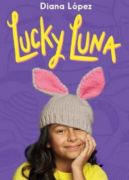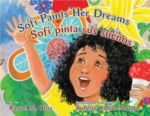
The star of Orange Is the New Black and Jane the Virgin, Diane Guerrero presents her personal story in this middle grade memoir about her parents’ deportation and the nightmarish struggles of undocumented immigrants and their American children.
Materials from the Americas

The star of Orange Is the New Black and Jane the Virgin, Diane Guerrero presents her personal story in this middle grade memoir about her parents’ deportation and the nightmarish struggles of undocumented immigrants and their American children.

Sixteen-year-old Biz sees her father every day, though he died when she was seven. When he suddenly disappears, she tumbles into a disaster-land of grief and depression from which she must find her way back.

Fifth grader Luna Ramos has a great many cousins, mostly on her father’s side, but one of them, Claudia, is a source of constant annoyance; their current feud begins when Luna is punished for locking Claudia in the restroom at another cousin’s quinceanera but when there’s a bullying situation at school, Luna realizes that, despite their disagreements, cousins have to stand up for each other.

Rosa Santos, a Cuban American, works to save her Florida town, seeks admittance to study abroad in her homeland, and wonders if love can break her family’s curse.

Steeped in Hispanic folklore since childhood, middle schooler Charlie Hernandez learns the stories are true when, shortly after his parents disappearance, he grows horns and feathers and finds himself at the heart of a battle to save the world.

With a new sibling (her fourth) on the way and a big piano recital on the horizon, Dominican-American Ana Maria Reyes tries to win a scholarship to a New York City private school.

A Navajo family welcomes a new baby into the family with love and ceremony, eagerly waiting for that first special laugh. Includes brief description of birth customs in different cultures.

Sixteen year old Nalah leads the fiercest all-girl crew in Mega City, but when she sets her sights on giving this life up for a prestigious home in Mega Towers, she must decide if she’s willing to do the unspeakable to get what she wants.

Every night when he was a boy, José M. Hernández would look out the window and stare at the stars. They were different colors: blue, yellow and white. Some were larger and brighter than others, and some twinkled as if they were alive. Later, when he saw man land on the moon on TV, he knew he wanted to be an astronaut.

After a bad school day, Sofi is transported from a New York City community garden to the Dominican Republic and Haiti, and helps composer Juan Luis and artist Guerlande.